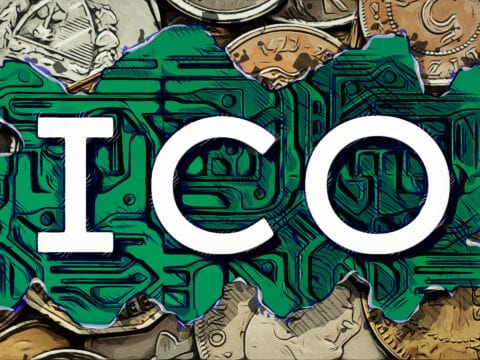
The world of cryptocurrencies is a great place for those looking to start exploring the possibilities of financial freedom by investing, saving, and spending using digital currency but for the uninitiated, it can seem like a wild and intimidating place.
While mainstream media has undoubtedly mischaracterized cryptocurrencies by covering the topic from a negative perspective related to crimes such as ransom and scams, as well as times of high volatility, any crypto investor needs to be careful.
Avoiding Common Crypto Scams
Cryptocurrency in itself is not more insecure than any other type of payment method. But, it can and is used to take advantage of unsuspecting victims of different kinds of cryptocurrency scams.
However, it is important to keep in mind that this is the case for gift cards, credit cards, cheques, money transfer services, and fiat currencies. By being aware of the different types of scams that are using cryptocurrencies, you are sure to reduce the risks of falling to one of them and losing your valuable crypto in the process.
In this article, you will be learning about some of the most common crypto scams and how to avoid them, but you should remember that the most important rule is that if anything seems too good to be true, it probably is.
1. Fraudulent Initial Coin Offerings (ICOs)
The crypto world is known for having multiple new projects created each month, with all of them requiring money to pay for operational costs and initial development.
While traditional companies recur to Initial Private Offerings (IPOs) to raise funds, cryptocurrency projects use its crypto equivalent: Initial Coin Offerings (ICOs).
This allows individuals and companies interested in the project to offer and receive the new tokens before their listing. Investors have made a lot of money from ICOs, but there have also been some pretty big ICO scams.
In some cases, the project might return the value paid for the tokens if it doesn’t reach the minimum required amount to launch, but as this is not the case every time; and most investors won’t receive their money if the project fails.
This makes ICOs a perfect opportunity for scammers looking to make money by “creating” a project they are not planning to develop, keeping the money from investors once the fraudulent nature of the project comes to life.
2018 was a specially active year for these cryptocurrency scams, with some reports suggesting that 80% of ICOs were a scam at the time. This made it difficult for new investors to actively support new projects as chances were their choice was fraudulent in most cases.
The best way to avoid ICO scams is to research the project thoroughly as well as its team.
Before investing, make sure to check the members’ personal page/social media to make sure they actually are supporting it. A well-known personality in the crypto world actively participating in the project will not mean it is 100% legit, but will certainly be a good sign.
Another red flag is if the project you are researching does not have a white paper, which is the document that contains the technical information of a project as well as its vision. The lack or low quality of a white paper indicates that the project lacks quality or might not be legit at all.
Lastly, make sure to look at the token sale mechanism itself and ask yourself:
- Does it seem overly complicated?
- Is it using a shady platform?
- Does it seem to lack transparency when it comes to reporting its status?
- Does it have utility?
Trustworthy ICOs will make sure to make the process as transparent and easy as possible for potential investors, so this is a good indicator of a valid ICO. While investing in ICOs takes a lot of research to make sure the project has potential and is real, it is one of the best ways to make big returns if you can find the hidden gems.
Don’t be discouraged by the three letters, as even if some ICOs are scams, they are an essential part of the crypto ecosystem, and the risk can be easily mitigated by taking your time.
2. Fraudulent Exchanges and Wallets
One of the “negative” aspects of the digital era is how easy it is for anyone with some coding knowledge to create an application or website intended to deceive others.
We see this every day in our inbox and spam folders, browsing the internet or checking out app stores. The crypto world isn’t any different.
As all cryptocurrency is digital, holders require digital tools to store, trade, and use their different coins, which makes them especially susceptible to this type of crypto scam.
Fake exchanges and wallet scams are pretty straightforward and easy to avoid: a user will look for a new exchange or wallet to use, finds one with incredible features or benefits, and then deposits its crypto just to find out it is lost forever.
Just as you wouldn’t give your money to anyone claiming to be a reputable bank, you should be wary when choosing where to save your crypto. Using reputable and well-known exchanges/wallets is paramount to ensuring your crypto is safe and in good hands.
Using tools like CoinGecko and CoinMarketCap’s exchange ranking will allow you to have an idea of how trustworthy exchange is before depositing your hard-earned crypto.
When it comes to wallets, make sure to go with one of the popular options or do your research by looking at reviews from other users, but be wary of fake reviews. A tried and true wallet is going to be a better choice, especially if you are planning on putting a substantial amount of tokens in the wallet.
3. Pump and Dump Schemes
The crypto world is not only known for the myriad of opportunities it represents when it comes to revolutionizing our society but also for its incredible sense of community.
However, while you are sure to find many like-minded and friendly crypto enthusiasts in your journey, not all of them will be looking to help you, and the ecosystem grow.
Pump and Dump schemes consist of the intentional inflation of a cryptocurrency’s value by generating hype and investing significant amounts of money in it when the price is low.
This rapid increase in value will result in other investors jumping on the possibility of investing in a growing coin, just to find out that the scammers sell all of their holdings when the price increases.
This process results in gains for those who ran the scheme while causing losses for those who invested later, as the value will drop once they pull out support.
It is difficult to differentiate between “pump and dumps,” and actual interest resulting in a bull run for a coin, which shows how important it is to invest in projects that actually have potential and you believe in, as fear of missing out (FOMO) is one of the leading causes of bad decisions when investing.
Fortunately, it takes a large number of people or someone with a big following to be able to pump and dump.
One notable example is when Dave Portnoy jumped into crypto and stated In crypto, you can pump and dump all day long,
evidenced by the impact his tweets had on several projects.
To avoid falling victim to pump and dumps, make sure to take everything with a grain of salt. If you haven’t researched a project and would have invested in it because it was recommended by a group or influencer, be mindful of the risks.
4. Crypto Giveaways and AirDrops
Just like any investor, cryptocurrency investors aren’t generally known for giving free money away. Even if they did, they certainly wouldn’t ask you to send them some before receiving a gift.
One of the most notable examples of this scam occurred back in July of 2015 when the Twitter accounts of several personalities were hacked and used to make more than $100 thousand in Bitcoin.
The method was simple, Tweet using one of the compromised accounts asking people to send crypto to specific wallets, just to have it sent back and doubled.
Hundreds of people who saw the official accounts of Bill Gates and Barack Obama were quick to seize the opportunity, sending their BTC to the wallet addresses provided. As you probably suspected, none of them received back the money that was promised, not even the original amount.
This type of cryptocurrency scam will usually promise free money in exchange for an original contribution aimed to “verify” your crypto wallet or show your good faith, which no legit party would request.
While giveaways and AirDrops do occur, as in the case of Uniswap’s when it gave 400 UNI to its users back in September of 2020, users are not required to provide any money in order to receive it.
Remember this old rule to avoid this scam: If something seems too good to be true, it probably is.
Be careful with promises of free money, especially if you are asked for personal information or any valuable asset in return. In fact, when you see a request for personal information, take a break and really think about what you are doing.
5. Ponzi Schemes
Also known as pyramid schemes, these are among the most common types of cryptocurrency scams in modern life. The premise is simple too: the scammer comes to the victim with a wonderful idea to make money, but it requires an initial investment and convincing other people to join.
While in this case, the original investors might be able to make some money at the beginning as more people jump in. A bubble is created as it is impossible to sustain the pyramid any longer, generating losses for everyone involved once it crumbles.
The only real winner in this scheme is the original scammer who will keep most of the money before and after the scheme ends. This is especially troublesome when it comes to crypto as people can stay anonymous and run their scheme with a website or app as a cover.
Most crypto Ponzi schemes will disguise themselves as mining or crypto pools, which are a legit way of generating returns in some cases, so make sure not to join any of these unless it is run by a reputable source.
Legit pools like those run by Binance will inform you of the risks of joining them and won’t ask/demand you invite other people to get your part.
6. Honey Pots
While sometimes you might be walking through the street and find a bill you get to keep, sometimes that bill you got out of your way to pick up might be a trap.
This is the case with some famous crypto scams in which users find free crypto-assets “laying” around, and their greed gets the best of them, causing them to lose their money in the process.
A famous scam saw the scammer publish their crypto wallet’s private key so other investors would see and access it, only to find $5000 worth of crypto in it with no ETH to pay for the transfer to their own wallets.
What seemed like a great deal turned out to be a clever tactic to get money by having the users deposit ETH in the wallet to pay for the transfer, which was tied to a smart contract that would automatically siphon the deposited ETH into another wallet owned by the scammer.
As more people “found” the private keys and attempted to get the $5k by adding ETH, the more money the scammer made in the other wallet without ever losing its original assets.
Some other forms of honeypots are more technical, requiring both the victim and scammer to know how to write and modify smart contracts. In these cases, the scammer will make the victim believe that it is possible to take advantage of the contract by hacking it, only to find out that it is the other way around.
You wouldn’t walk into a dark alley to pick up a gold ring at night, so be careful when you find something in the world of cryptocurrency that seems to be very valuable and looks to be abandoned.
Staying Safe With Crypto Investments
It’s true that investors have made outsized gains in the crypto markets, but they didn’t do it by hoping to make piles of money overnight. For every investor who did well on a risky ICO, one probably lost everything they put into it. Use the same discretion you would in any market, and there is a good chance that you can create healthy returns with cryptocurrencies.





